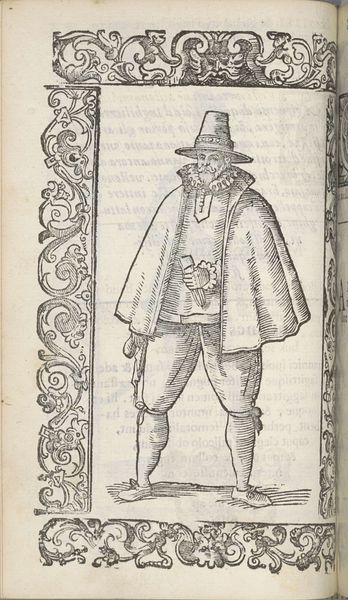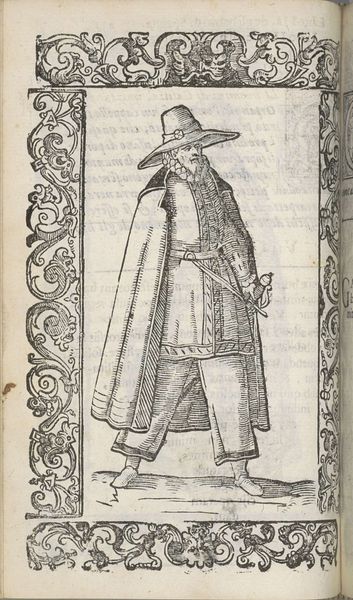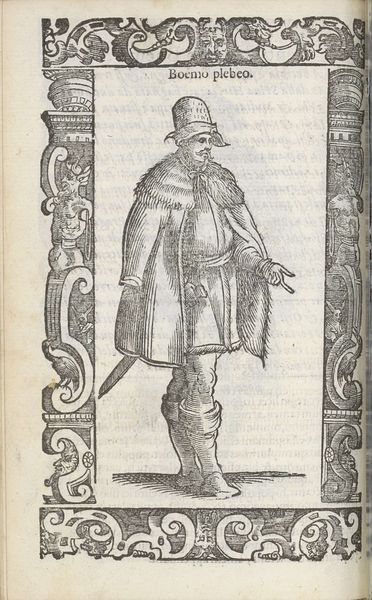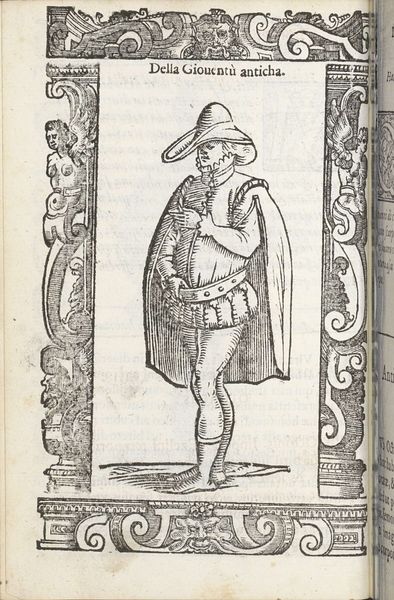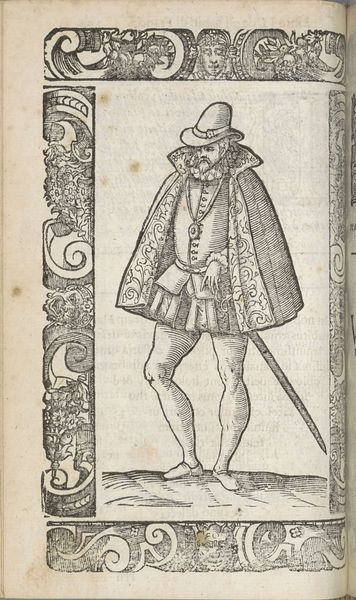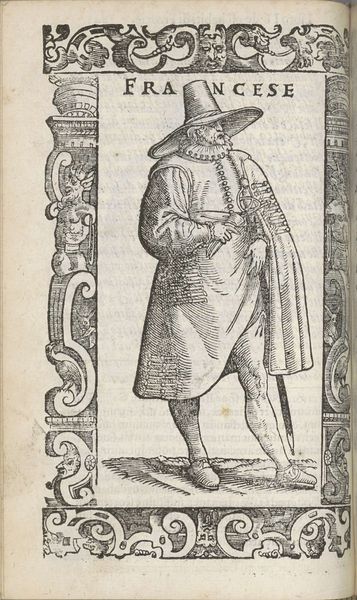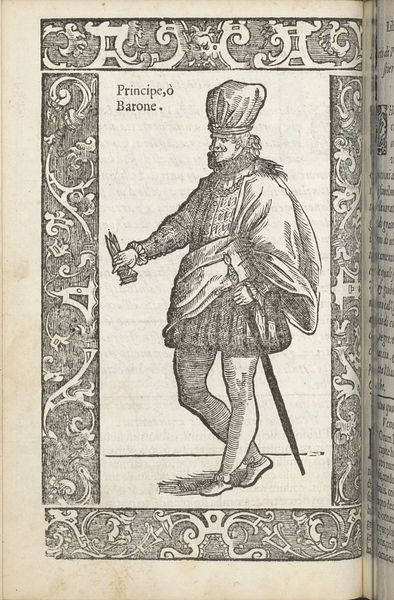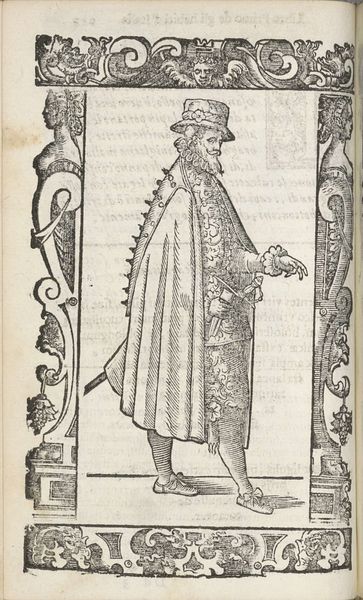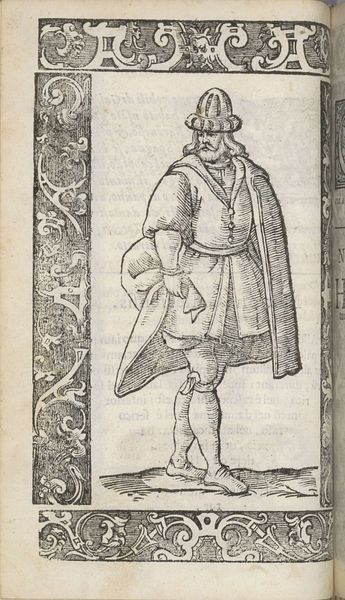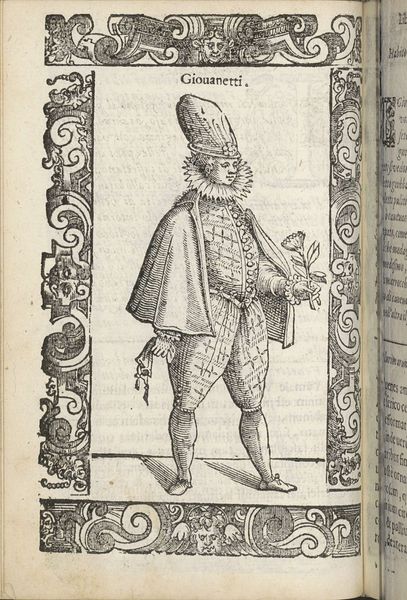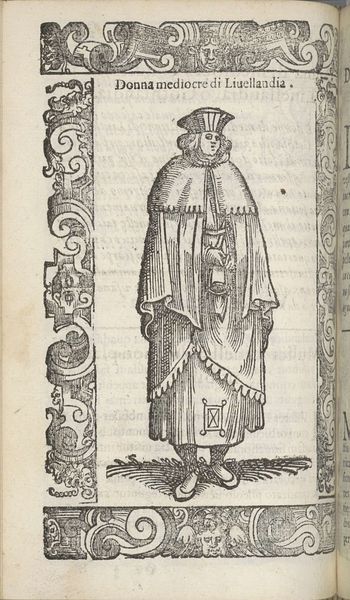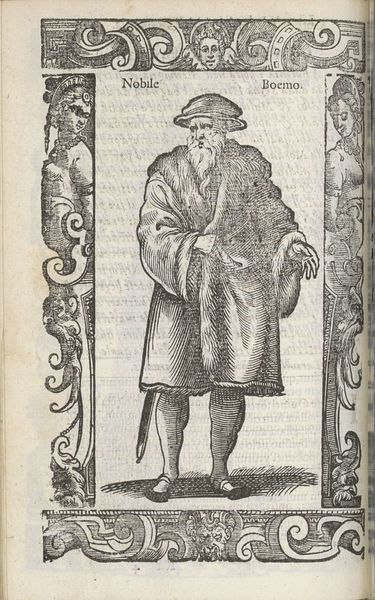
drawing, ink, pen
#
portrait
#
drawing
#
pen drawing
#
figuration
#
ink
#
pen
#
genre-painting
#
italian-renaissance
Dimensions: height 167 mm, width 125 mm
Copyright: Rijks Museum: Open Domain
Curator: This captivating pen and ink drawing, created around 1598 by Christoph Krieger, is entitled "Contadino," an Italian word for peasant. Editor: It strikes me as rather melancholic. The man seems burdened, leaning on his staff. The dense, parallel lines in the cape almost weigh him down further. Curator: Krieger’s focus on the details of the contadino’s clothing is quite fascinating. Look at the precise rendering of his hat and cloak; notice how those lines suggest the coarse texture of the fabrics and speak to a certain class distinction during the Italian Renaissance. Editor: Absolutely, and the bagpipe suggests more than mere labor; it hints at cultural identity, at a rural life beyond just working the fields. What were the social structures enabling Krieger, likely part of a patron class, to have leisure and artistic means to portray those on the margins? Curator: Krieger likely produced drawings like these to be turned into prints for distribution, satisfying the markets of the rising merchant classes during that era. These types of "genre paintings," although stylized, offer important, rare glimpses of ordinary workers—a labor force integral to Italy’s wealth during this period. Editor: It’s impossible to divorce such works from the historical power dynamics at play. While seemingly celebrating the rural worker, “Contadino” subtly underscores an inequitable structure where some observe and record while others are observed and recorded. What does visibility mean when filtered through a dominant lens? Curator: We have to also consider how such an artwork could have inspired others and been produced. One wonders where Krieger obtained the pen and ink itself, or on what sort of paper support he made this artwork, and who processed those materials. The role of labor stretches far beyond its subject. Editor: It truly offers many avenues for interpretation, doesn't it? Curator: Indeed. I find I'm thinking of all those unseen hands involved. Editor: As am I, as well as the social conditions that led to its very creation.
Comments
No comments
Be the first to comment and join the conversation on the ultimate creative platform.
